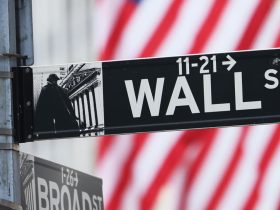TOKYO — Asian shares mostly declined in cautious trading Tuesday ahead of the Federal Reserve’s looming decision on interest rates.
Japan’s benchmark Nikkei 225
JP:NIK
dropped 1.2% in morning trading. Australia’s S&P/ASX 200
AU:XJO
lost 0.4% while South Korea’s Kospi
KR:180721
edged down 0.3%. Hong Kong’s Hang Seng
HK:HSI
slipped 0.1%, while the Shanghai Composite
CN:SHCOMP
fell 0.1%. Benchmark indexes in Singapore
SG:STI
and Taiwan
TW:Y9999
rose, while stocks slipped in Indonesia
ID:JAKIDX.
The Fed is due to wrap up a two day meeting on Wednesday. Japan’s central bank will meet Thursday-Friday as observers speculate that it might gradually begin to adjust its longstanding negative interest rate policy.
“Market sentiments remained in its usual wait-and-see ahead of the Federal Open Market Committee meeting this week,” said Yeap Jun Rong, market analyst at IG.
Monday on Wall Street, the S&P 500
SPX
edged up 0.1% to 4,453.53 and the Dow Jones Industrial Average
DJIA
rose less than 0.1% to 34,624,30. The Nasdaq composite
COMP
added less than 0.1% to 13,710.24.
Stocks have been see-sawing since early August on uncertainty about whether the Fed will finally end its hikes to interest rates. Higher rates have helped cool inflation from its peak last summer, but they also hurt prices for stocks and other investments while slowing the economy.
Traders almost universally expect the Fed to keep rates steady at its meeting this week. Attention will mainly focus on forecasts Fed officials will publish about where they expect interest rates, the economy and the job market to head in upcoming years.
Traders are betting on a roughly 40% chance the Fed will raise rates again in either November or December, according to data from CME Group.
But just as much attention will be on what Fed officials say about next year, when investors expect the Fed to begin cutting interest rates. Investors crave such cuts, which typically loosen up financial conditions and give boosts to financial markets. The big question is by how much the Fed could cut.
Fears are strong that rates may have to stay higher for longer to get inflation down to the Fed’s 2% target. That quest has been complicated by a recent spike in oil prices.
Worries about a possible recession persist though they have diminished as reports have shown the economy and job market remain resilient. One worrying factor is where bond yields are, with two-year and other shorter-term yields continuing to remain higher than longer-term yields. That’s an unusual occurrence that has often preceded recessions in the past.
Another warning signal comes from the leading economic indicators index, which looks at new orders for manufacturers, consumer expectations for business conditions and other factors that could show where the economy is heading.
When its six-month annualized rate-of-change contracts 3% or more, it’s always been associated with a recession, according to Doug Ramsey, chief investment officer of The Leuthold Group.
It’s been 15 months since the most recent such warning. In the past, the longest stretch between such a trigger and a recession was the 16 months before the Great Recession. If this matches that one, it could imply a recession beginning in October, Ramsey says.
In energy trading, benchmark U.S. crude
CLV23,
added 81 cents to $92.29 a barrel in electronic trading on the New York Mercantile Exchange. It rose 71 cents to $91.48 Monday. That’s up from less than $70 in July. Brent crude
BRNX23,
the international standard, rose 18 cents to $94.61 a barrel.
In currency trading, the U.S. dollar
USDJPY,
inched up to 147.71 Japanese yen from 147.58 yen.
Read the full article here













Leave a Reply